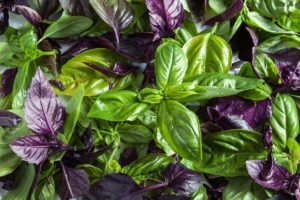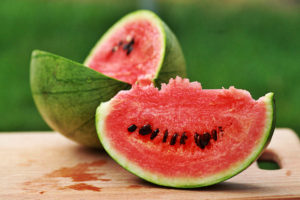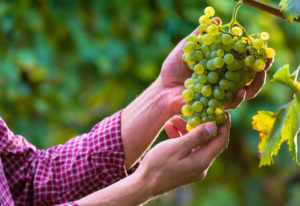
Spring has come — the time for sowing. Most summer residents have already started the seedling stage of the summer marathon. What do you need to succeed? High-quality seeds, convenient containers, proper lighting and, of course, suitable soil.
Someone prepares soil mixtures themselves: experts and Amateurs have written about the subtleties of this process more than once. But not everyone has the ability, strength and desire to do it on their own. And then we go to the store for soil. And there… the Eyes run away from the abundance of packages, briquettes, bags of all colors and sizes, and on each — inscriptions promising unprecedented harvests. And what to choose? Let’s figure it out.
What kind of soil do plants need?
Seedling boxes and pots are such mangers for plants. Like all babies, young plants need favorable conditions for healthy growth and development.

In order for the seed to swell and germinate, in addition to the optimal temperature, a certain humidity is required. This means that the soil must absorb well and retain moisture for a long time, but at the same time be sufficiently loose and airy so that the seed does not “suffocate” and rot. In addition, in dense soil, it will not be easy for young roots to break through.
Since seedlings develop in a limited amount of soil, the soil must contain enough nutrients for a successful start. Do not forget about the pH balance: if the soil is not properly acidic, the plant will not be able to fully absorb some elements and will lag behind in growth. The reaction of the soil should be close to neutral-pH 6-7.
Basic composition of prepared soils
The basis of most soils is a mixture of high and lowland peat. What is the difference between these components?
The riding peat has a high moisture capacity, friability and porosity and is responsible for supplying the roots with air and water. At the same time, there is almost no organic matter available to plants. The same properties have and fashionable now coconut substrate. But there are a lot of peatlands in our country, and somehow it didn’t work out with coconuts-so peat products are cheaper and easier to find.
Lowland peat enriches the soil with nutritious organic matter, but has low air permeability. Thus, we can conclude that both types of peat in the mixture complement each other.
Do not forget that the top peat has a high acidity. Among the plants there are, of course, lovers of “sourness”, but most vegetable and flower crops do not belong to them. Therefore, the composition must be deoxidizer-dolomite flour, lime or ash. In industrial mixtures, dolomite is usually used to bring the pH to 6-7.
To increase the looseness, so that after numerous watering, the peat does not condense and does not Crouch, large river sand, agroperlite or vermiculite is also added to the soil.
Standard peat mixture, of course, is rich in organic matter, but young plants are not able to fully assimilate the necessary substances from it. Therefore, you need to either constantly feed them, or buy soil that already has a starting set of mineral fertilizers.
Considering the packaging
After carefully studying the labels on the packages, we will see that in all soils, the base is approximately the same and consists of the elements discussed above. So what is the difference between them and which mix to choose? In my opinion, it is the composition, quantity and quality of fertilizers used that distinguish one product from another.
The amount of fertilizer in the soil is not taken by the producers from the ceiling, it is calculated for 1-2 weeks of seedling development after planting. On the packaging you will find the inscription “N: P: K”, which indicates the content of the main nutrients — nitrogen, phosphorus and potassium.
The main thing to pay attention to is the amount of nitrogen. This is the case when more doesn’t mean better. Seeds do not need much nitrogen to start. Increased doses of fertilizers provoke rapid growth, but affect the immune system and do not guarantee high yields in the future. Small — do not carry out full nutrition, require earlier and saturated feedings.
It is important to know! It is undesirable to use universal and flower soils with a nitrogen content of 300-350 mg / l or higher for seedlings, they are good only for adult plants.
In addition to macronutrients (nitrogen, phosphorus and potassium), plants need microelements — magnesium, boron, copper, iron, zinc, etc.the Microelement complex should be in a chelated form that is easier to digest by plants, especially young seedlings.

There is another nuance. Sometimes manufacturers do not put a complex fertilizer, but a mixture of individual ingredients — superphosphate, ammonium nitrate, for example. When you put the earth in small pots, you can get somewhere thick, somewhere empty. High-quality fertilizer contains the entire complex of useful substances in each particle and is evenly distributed over the entire volume of the soil. This information can also be read on the packaging with the primer.
Closer to nature, or a Little about bio soil
In principle, the above-described soils contain everything necessary and sufficient for the growth and development of seedlings. But if you are close to the idea of growing “without chemistry”, pay attention to bio soil. In addition to the standard set of components, they include biohumus-a product of organic processing by earthworms and soil bacteria. The microflora contained in it is natural and useful for the soil, increases its fertility and improves the structure, restores depleted land. Biohumus increases the energy of seed germination, strengthens the immune system of plants and stimulates their growth and development.
Bio soil is good not only for growing seedlings, but also for enriching the soil in the beds when it is planted in a permanent place. It will come in handy when transplanting perennials — and everywhere in the garden and flower garden, where you need to add fertile soil.
Remember: it is not necessary to steam such soil, calcinate, shed manganese or conduct other similar manipulations with it. This will kill the useful soil microflora and negate the benefits of the bio soil.
And what kind of soil for seedlings do you prefer? Tell us about your findings.




Leave a Reply